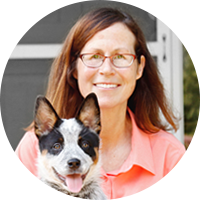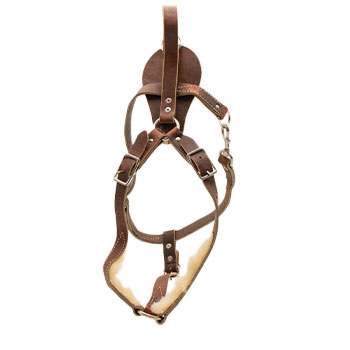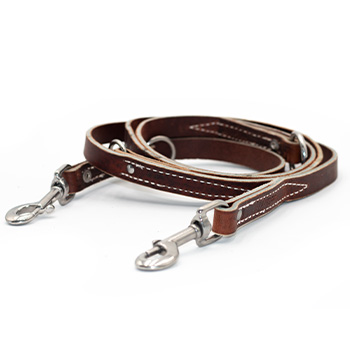May 10, 2011
My dog is having problems on slippery floors when we work on the search. Can we get him past this issue? Should we even worry about?
Full Question:
Ed,It's been quite awhile since I have come to you with a training problem. My first police dog had an issue with his passive alert and your advice was spot on and got us through a problem we couldn't find the answer for. Unfortunately, after a short but great career, my first partner ended up getting cancer and has been retired from service. So as it goes in our business, we tested and found a new dog to replace him. The dog tested well and is showing some great abilities in all the training he has gone through. However, we have discovered a problem and I would love to get your expert opinion. This dog, Zeke, is an 18 month old Czech GSD and is showing signs of a slick floor issue. It is not every floor, and it is not every surface. He is great outdoors, great on door agitation, but when he is sent onto a floor to make a find he hugs walls and crouches his way down the floor. When he does make the find, he alerts properly and aggressively. He will engage the decoy on the floor with a nice full mouth bite, but as soon as he is off the bite, it is very obvious that he is not comfortable on the surface. I guess my question is two-fold. Can we get him past this issue, and is it that much of a concern considering he will do what is required of him on the floor? We have backed up and slowed down his training on floors and are concentrating on the agitation side because he does do well there. We are not in a hurry, and I would appreciate any advice or training methods you have seen work. I'd be happy to give you anymore information you need as I really would love to see this dog make it through our training. However, we do plenty of building searches, and I can't afford to take a dog out on the streets with this kind of issue. Thanks again for your willingness to share you experience and I look forward to hearing from you.
Paul

 Cindy's Answer:
Cindy's Answer:
Paul,
Nice to hear from you. It sounds like someone missed something on the selection testing with your new dog.
Without seeing the dog I can’t tell you if you can make this work. I have seen some dogs pull through. Those that do pull through are dogs that have not been socialized to a slick floor as a puppy.
Those who don’t pull through are dogs with genetically weak nerves. Without testing in training it is very hard to tell which is the case. Frankly more don’t test out than those who get past it.
Those who don’t make it will eventually start to avoid hiding sports that contain a decoy unless they are stimulated ahead of time. This becomes a dangerous situation for the handler that tries to do real searches on the street.
All I can say is that you should continue your training with a “wait and see” attitude. Here are the some of the training steps we have done with dogs that had these issue.
Nice to hear from you. It sounds like someone missed something on the selection testing with your new dog.
Without seeing the dog I can’t tell you if you can make this work. I have seen some dogs pull through. Those that do pull through are dogs that have not been socialized to a slick floor as a puppy.
Those who don’t pull through are dogs with genetically weak nerves. Without testing in training it is very hard to tell which is the case. Frankly more don’t test out than those who get past it.
Those who don’t make it will eventually start to avoid hiding sports that contain a decoy unless they are stimulated ahead of time. This becomes a dangerous situation for the handler that tries to do real searches on the street.
All I can say is that you should continue your training with a “wait and see” attitude. Here are the some of the training steps we have done with dogs that had these issue.
- Start your work with bite work on slick floors– rather than playing with a ball. The dogs are in higher drive when they do bite work vs playing with a ball. The ball, tug narcotics work can be done after the bite work.
- Start with a sleeve being hidden inside the building – not that far in. The helper wearing a second sleeve starts just outside of the door for the building. He stimulates the dog with this second sleeve on his arm. He runs about 15 feet into the building and the dog is sent after him. The dog gets a bite – the sleeve is slipped and the dog carries the sleeve outside.
- The helper turns and runs back into the building and puts the sleeve on that was hidden. Depending on the behavior of the dog on the first bite – he either steps to the door and re-stimulates the dog and repeats the procedure or he turns and hides further inside the building (not that far) and the dog is sent again. This can be repeated several times, even in different buildings.
- Then on a new training day you would not let the dog see the helper enter the building. Pull up make your announcement and send the dog. This should be a short easy search - find and bite - None of these are bark and holds. They are all find and bites.
If this goes well don't let the dog carry the sleeve outside. Have him OUT the sleeve - the helper then turns and runs to a place he has hidden a second sleeve. The dog is resent for a find and bite and the dog then carries the sleeve out of the building.
You can gradually extend the length of the search on the slick floors. - If you can’t get past this step then the dog needs to be replaced.
- If the dog does well then you can repeat the process where the helper does not wear the sleeve- he just stands – stimulated the dog and disappears. If this goes well the dog is sent into the building without pre-stimulation. At this point the helper is close to the front door and the distance he goes inside is gradually increased.
- If your dog is going to be a drug dog you should do your training in a similar fashion. Use one scratch box. Start with the box just inside the door. Let him burst in make a quick find then a good tug of war and drag him outside while still playing tug.
- Gradually add more than one scratch box just inside the door. When he will come in and search 3 or 4 boxes you can move the finds further into the building. If he won’t search 3 or 4 boxes when they are close to the front door then the dog should be replaced.
- If the dog gets along really well with another dog and will play with that dog take them to play in a gym or cafeteria or some such place. It was a goofy suggestion the first time I heard it, but damned if it doesn't work if the dog simply lacks socialization to new things. They see their peer run in and play so they don't worry about it. This will not fix dogs with a genetic problem only those who have not been socialized to slick floors.
0% (0 out of 1)
respondents found this answer helpful


Can't find what you're looking for?




